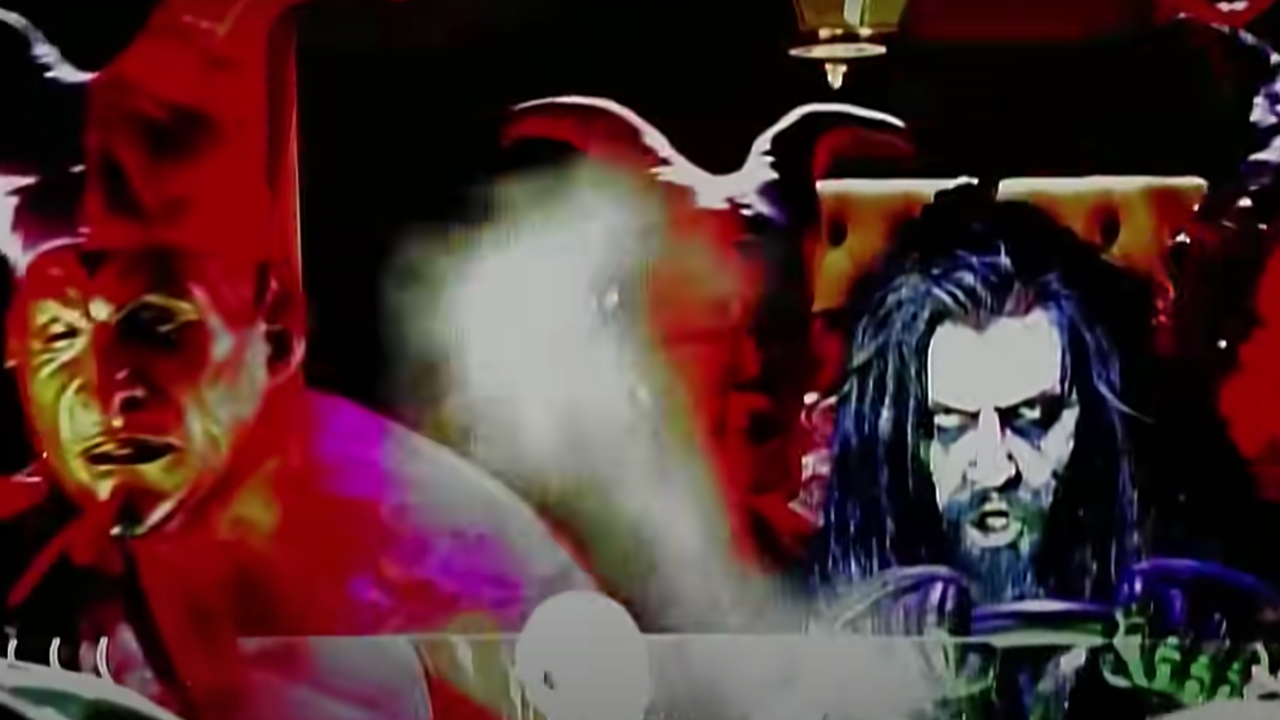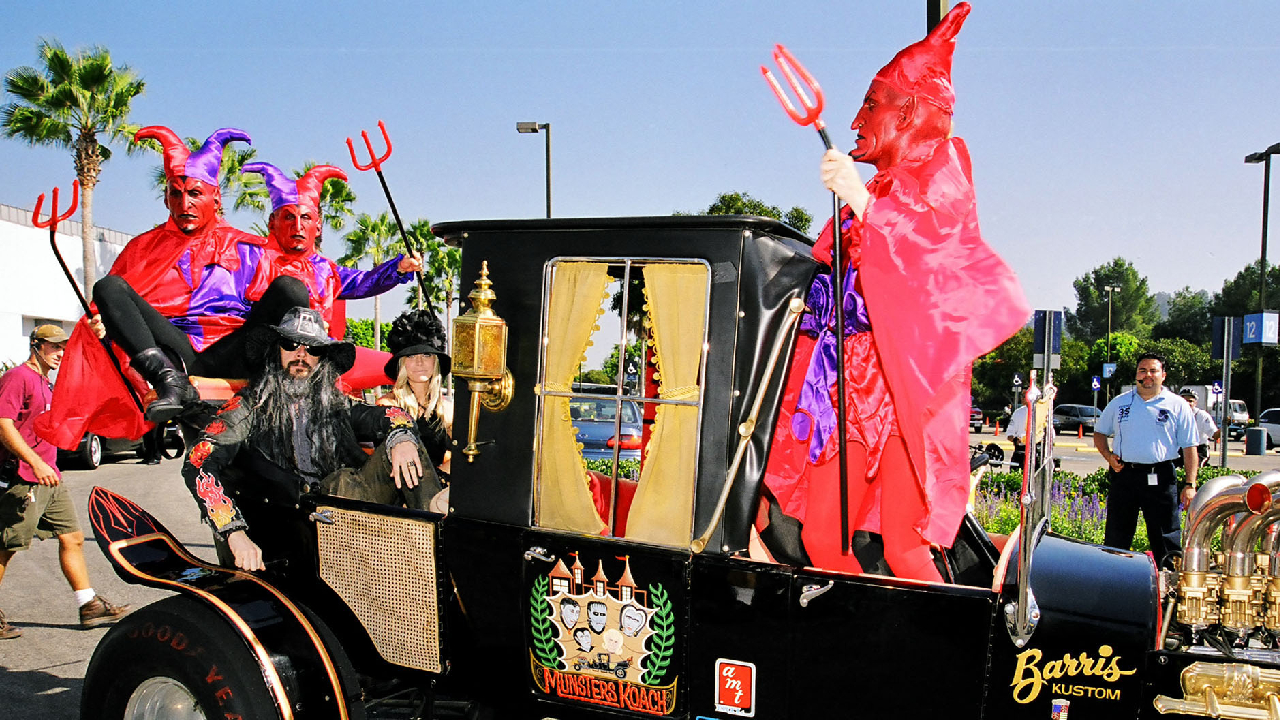
It was September 22, 1998, and the start of one hell of a week for Rob Zombie.
That day, the singer gathered his White Zombie bandmates on a conference call and pulled the plug, bringing to an end one of the most consistently exciting bands of the ’80s and ’90s. Within 24 hours, the spooky foursome officially announced their split, and by the end of the week, Rob would appear on US talk show Late Show With David Letterman to launch his solo career in a mutant rubber suit.
The track he performed that night, Dragula – the first single from his recently released debut album, Hellbilly Deluxe: 13 Tales Of Cavernous Cavorting Inside The Spookshow International – transformed him into a genuine metal icon on the spot, kicking down the hinges to a brand new chapter.
The timing of White Zombie’s split was ironic because, as far as anyone on the outside was concerned, the band had finally made it. Despite forming in New York in 1986 as a noise-punk outfit, by 1992’s La Sexorcisto: Devil Music Volume 1, they had eschewed art-rock for throbbing, groove-heavy, horror-drenched psych-metal. The album’s sleazy lead single, Thunder Kiss ’65, earned them their first Grammy nomination and, by the time they hit the road in support of their 1995 finale Astro-Creep: 2000, they had become a commercially successful, arena-filling, platinum-selling behemoth.
Behind the scenes, though, life in those ranks was a miserable affair.
“We toured for almost four years without ever speaking to each other,” Rob told Craig Kilborn during an interview on The Late Late Show in 2003. He also revealed relationships had deteriorated to the point where he was travelling on a separate tour bus from the rest of the band: “I would just show up – walk onstage, we wouldn’t even look at each other, we’d play, I’d walk off.”
Having decided that White Zombie was dead in the water, Rob put together his own band with ex-Prong bassist Rob Blasko, guitarist Mike Riggs and White Zombie/The Cult percussionist John Tempesta (Mötley Crüe drummer Tommy Lee also plays on two Hellbilly tracks: Meet The Creeper and The Ballad Of Resurrection Joe…).
Most importantly, though, Rob also hired Crüe producer Scott Humphrey, and together they crafted a sound that felt utterly like an extension of Rob himself: White Zombie’s garage metal, except turbo-charged with industrial grooves and pulsating electronica, and drenched with buckets of horror references and grindhouse camp.
When the band headed into the Chop Shop in Hollywood in early 1998 to record Hellbilly…, Dragula was one of the last songs to be written and tracked. Opening with creepy horror keys and a dialogue sample from the 1960 film The City Of The Dead spoken by actor Christopher Lee (“Superstition, fear and jealousy”), it builds immediately into a filthy stomp, intensified by trembling guitar, then a wickedly macabre ode to death, monsters and demonic sex: “Dig through the ditches and burn through the witches / I slam in the back of my Dragula!”

“It was very much him and Scott Humphrey,” bassist Blasko said of Dragula’s irresistible groove in a 2020 Kerrang! interview. “My contribution was minimal at best, based on the collaboration they built. Whether or not I had played on Dragula, it still would’ve been a hit. It was a hit long before I played on it.”
Rob had long shoehorned his life-long love of horror into White Zombie’s music, on tracks like Real Solution #9 and Super-Charger Heaven, but on Hellbilly…, the horror references feel just as important as the music itself: an integral part of Zombie’s blood-stained DNA as a solo artist. The track’s legendary fever dream video, which was directed by Rob himself, is packed with horror references, from Frankenstein to camp ’60s TV show The Munsters. In hindsight, it feels very much like a milestone on his path to becoming a well-known horror filmmaker, and he made his directorial debut with House Of 1,000 Corpses five years later.
As Rob told Billboard in 1998, Dragula’s title is “loosely” based on a drag car of the same name (which was built around a real fibreglass coffin) for a 1965 episode of The Munsters. The music video sees him driving a spooky car that’s very much a tribute to the original Dragula hot rod – given he was unable to get his hands on the real one.
“A couple of ‘em [were made] and they’re all in places we can’t get to,” Rob told Metal Edge in 1998. “One of them is trapped in customs in Hong Kong, and the other one is hanging from the roof of a casino in Atlantic City. There’s a Munster Coach, a different kind of souped-up dragster that’s on the Universal backlot. I’ll probably use that one.”
Time constraints had prevented the singer from having a replica of the original Dragula built. “It would be hard to explain delaying [the video] a month to build a car,” he continued. “$200,000 to build a dragster?!”
Released on August 25, 1998, Hellbilly… was an immediate success, selling 120,000 copies in its first week and debuting at number five on the Billboard charts. And, while the whole album comes off like a conveyor belt of back-to-back bangers, it’s Dragula that has remained the debut’s highlight and Rob’s definitive anthem, having lost none of its potency in the last 25 years.
“It was a song that almost didn’t happen,” Rob said in an interview not long after Hellbilly…’s release. “We had the album done and then we found this little, tiny piece of guitar on a tape that was so distorted and sounded horrible. That’s awesome! Let’s make a whole song based around that two seconds of noise. The best songs are always the happy accidents.”







